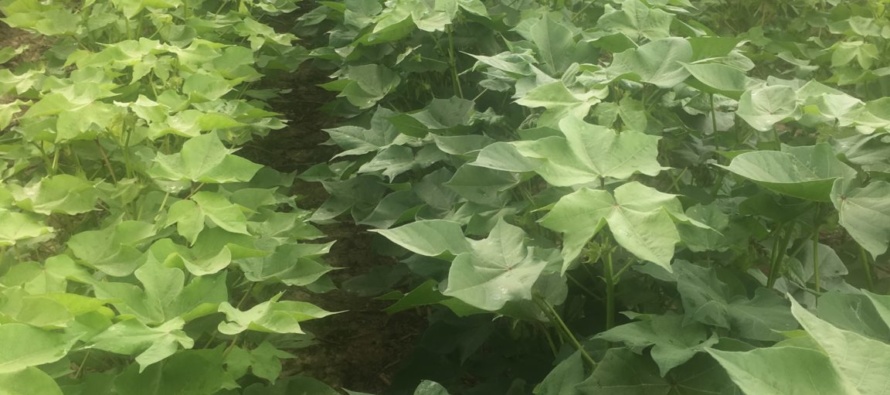Cotton: Plant Growth Regulator Use

Related Articles
- Calcium and Magnesium For Mississippi Crops 0
- March 11 Precision Agriculture Workshop 0
- Ground Speed Affects Spray Droplet Deposition 0
Latest Tweets
Over the past two weeks cotton has started growing and finally looking like cotton. Many have been hesitant until the past couple of weeks to apply plant growth regulators given the poor growing conditions that were persistent throughout most of May and June. However, as summer heat has finally arrived and excessive rainfall has subsided, cotton is beginning to stretch out and gain much needed vegetative and reproductive growth. In addition, over the past 10-12 days a number of calls have been received regarding square loss. In some cases insects are the likely cause of this square loss; however, in other cases no insects have been found in given fields for some time. Regardless of why retention has been dropping off, generally speaking reduced retention equals increased vegetative growth. Given improved weather conditions and potential reduction in square retention, a number of plant growth regulator applications have been made in the past two weeks.
A few points should be considered when making/considering PGR applications. Decades of research have been conducted on PGRs and cotton response – yield responses are inconsistent. In some cases you may observe a yield increase from PGR application whereas in others a decrease occurs and in many, no effect on yield has been observed. Generally speaking, yield responses are not seen in long, favorable growing seasons whereas yield increases are more likely to be observed during shortened growing seasons. Application of PGR products do not shrink plants but rather shorten internode lengths on developing internodes. Optimal internode length is approximately 2-3″ when measured between the 4th and 5th node downward from the apical meristem (terminal). If your internode lengths between the 4th and 5th nodes down are shorter than this, no PGR application is recommended whereas internode lengths in excess of 3″ should trigger a PGR application. Varieties vary in terms growth habit. If you are unsure of the growth habit of the variety you planted, click the link below for a table summarized characteristics for a given variety. Be sure of the product you are applying – the most common PGR is 4.2% (0.35 lb ai/gal) mepiquat chloride. However, mepiquat pentaborate is available (Pentia) which has a higher lb ai/gal load than mepiquat chloride. However, the pentaborate portion of the molecule is heavier in Pentia than the chloride portion of the molecule in all of the 4.2 products. Essentially what this means is that although Pentia has a higher ai load per gallon, the same amount of mepiquat is delivered when 12 oz of Pentia or any 4.2% product is applied. In addition, mepiquat chloride + cyclanilide (Stance) is available and should be used at much lower rates than Pentia or mepiquat chloride products.
Given the appropriate use rate, all products perform equally at limiting vegetative growth. In other words, choose the product that best suites your situation which can be affected by price, rainfastness, use rate/amount of material to handle, etc. Do not apply a PGR with the goal of increasing yield given that years of research have resulted in inconsistent results. However, keep in mind that a shorter, more compact plant is generally easier to penetrate with insecticides and harvest aids and is usually easier to pick than large, rank cotton.




Let me tell You a sad story ! There are no comments yet, but You can be first one to comment this article.
Write a comment